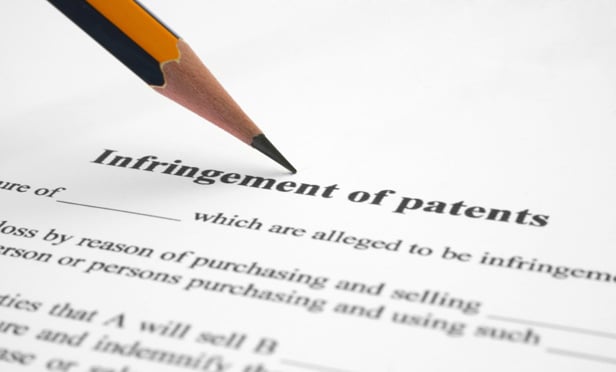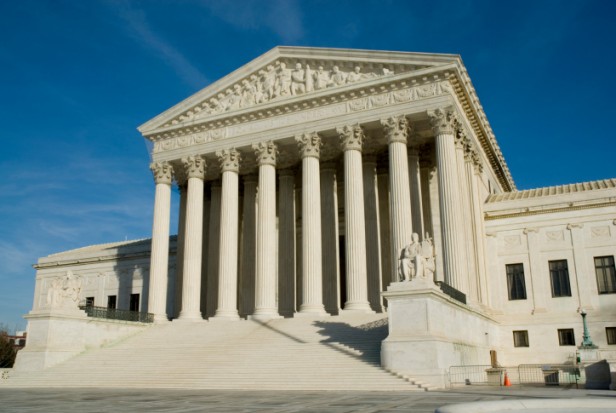Features

<b><i>Online Extra</b></i><br> After Years of Setbacks, Patent Owners Try to Turn Tide in Congress
Patent owners have taken control of the patent reform debate in the 115th Congress, but it's not clear yet who's supposed to be listening.
Features

Supreme Court Turns Back the Clock on Venue In Patent Infringement Litigation
Although <i>TC Heartland LLC v. Kraft Foods</i> answers the question of where a domestic corporation resides in patent infringement cases, it does not fully answer the question of where proper venue lies.
Features

How Much Did the Federal Circuit Narrow Eligibility for Covered Business Method Review?
In November of last year, the Federal Circuit narrowed the types of patents eligible for covered business method review in <i>Unwired Planet, LLC v. Google Inc.</i> The court's decision narrowed what patents are eligible for CBM review, and provided some guidance for future cases.
Features

Amending Patent Claims in Post-Grant Trial Proceedings
<b><i>What You Need to Know</i></b><br>The America Invents Act gave patent owners the right to move to amend their patent claims. To date, however, this right has been more illusory than real. Given their dismal success rate so far, many hope that the tide will turn in favor of granting more motions to amend.
Features

Joint Infringement Post-Akamai: Understanding the Impact on Prosecution and Litigation Strategies
This two-part article aims to deconstruct the new joint infringement standard, provide insight into how the standard might be interpreted and provide practice tips for prosecution and litigation. Part 1 chronicles the <i>Akamai</i> cases that ultimately resulted in a new standard for joint infringement and explores the potential interpretations of that standard.
Features

<b><i>Online Extra</b></i><br>Apple Loses to Samsung in Supreme Court Design Patent Case
The U.S. Supreme Court unanimously ruled in favor of Samsung Electronics on Dec. 6 in its titanic patent dispute with Apple Inc. over design features copied from Apple iPhones.
Features

Expanded Means-Plus-Function Analysis Presents New Opportunities and Challenges
The Federal Circuit's <i>en banc</i> decision in <i>Williamson v. Citrix Online</i> expanded the potential application of 35 U.S.C. §112, ¶6, making it more likely that functional claim language will be construed as a means-plus-function limitation even in the absence of the word "means." This article discusses recent decisions applying <i>Williamson</i> and provides practical insights and strategies for patent owners and accused infringers to consider when addressing the expanded application of §112, ¶6.
Need Help?
- Prefer an IP authenticated environment? Request a transition or call 800-756-8993.
- Need other assistance? email Customer Service or call 1-877-256-2472.
MOST POPULAR STORIES
- Use of Deferred Prosecution Agreements In White Collar InvestigationsThis article discusses the practical and policy reasons for the use of DPAs and NPAs in white-collar criminal investigations, and considers the NDAA's new reporting provision and its relationship with other efforts to enhance transparency in DOJ decision-making.Read More ›
- The DOJ's Corporate Enforcement Policy: One Year LaterThe DOJ's Criminal Division issued three declinations since the issuance of the revised CEP a year ago. Review of these cases gives insight into DOJ's implementation of the new policy in practice.Read More ›
- The DOJ's New Parameters for Evaluating Corporate Compliance ProgramsThe parameters set forth in the DOJ's memorandum have implications not only for the government's evaluation of compliance programs in the context of criminal charging decisions, but also for how defense counsel structure their conference-room advocacy seeking declinations or lesser sanctions in both criminal and civil investigations.Read More ›
- State Law Requiring Offer to License Conflicts With Copyright ActA federal judge has sided with the Association of American Publishers (AAP), finding in June that a recently enacted Maryland library e-book law conflicts with federal copyright laws.Read More ›
- Bankruptcy Sales: Finding a Diamond In the RoughThere is no efficient market for the sale of bankruptcy assets. Inefficient markets yield a transactional drag, potentially dampening the ability of debtors and trustees to maximize value for creditors. This article identifies ways in which investors may more easily discover bankruptcy asset sales.Read More ›
